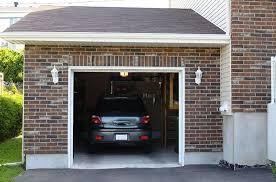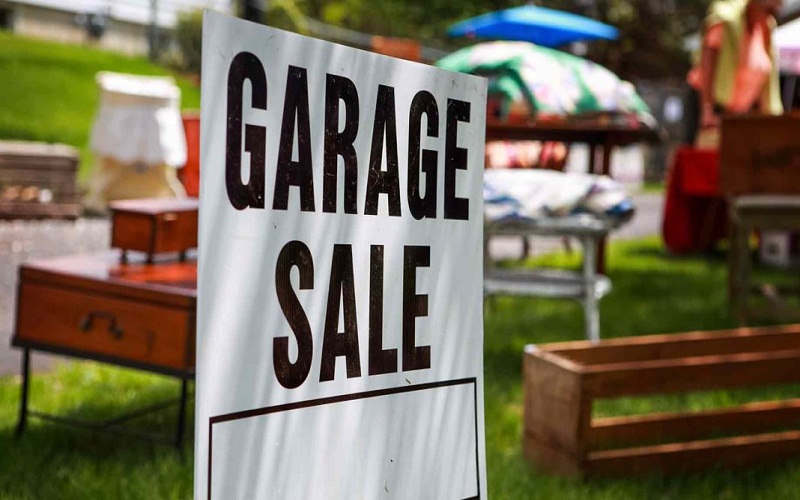Garage Door Bottom Seal Replacement Guide

A garage door bottom seal is an essential component that helps insulate your garage and prevent dirt, leaves, pests, and moisture from entering your garage. As your garage door opens and closes hundreds or even thousands of times a year, the bottom seal eventually wears out or gets damaged. Replacing a worn-out bottom seal can seem daunting, but it’s a relatively easy DIY project you can tackle in an afternoon. In this comprehensive guide, I’ll walk you through garage door bottom seal replacement, from selecting suitable materials to proper installation. Let’s get started!
Why Replace Your Garage Door Bottom Seal?
Before jumping into the step-by-step instructions, let’s first go over why it’s essential to replace a worn-out bottom seal:
Improved Insulation
The bottom seal is a barrier between the outside elements and your garage interior. A new bottom seal will prevent cold drafts from entering your garage during winter. It also blocks leaves, dirt, and other debris from blowing in under the garage door, keeping your garage cleaner.
Pest Control
A deteriorated or missing bottom seal allows pests like mice, bugs, and snakes to enter your garage. Replacing the seal denies these critters access to your home.
Moisture Protection
During heavy rains, an ineffective bottom seal allows water to seep into your garage. This can lead to flooding issues or water damage. A new seal keeps the moisture out.
Noise Reduction
As the garage door opens and closes, an old, worn-out seal can cause it to rattle and shake. Installing a fresh bottom seal helps quiet the door and reduce noise.
Improved Appearance
A sagging or cracked seal doesn’t look very good. Replacing it enhances the aesthetic appeal of your garage door.
Garage Door Bottom Seal Replacement Cost
Before deciding to replace the seal yourself, you may want to know the cost if you hire a professional. The average price for a garage door company replacing the bottom seal ranges from $125 to $300.
Some factors that affect the price include:
- Garage door size – Larger doors cost more.
- Seal material – Vinyl seals tend to be cheaper than rubber.
- Service fees – Weekend or evening service costs more.
- Location – Pricing varies by city and region.
- Technician experience level – Some companies charge more for senior techs.
If the price quoted by garage door companies is within your budget, hiring a pro can be more accessible and hassle-free. However, replacing the bottom seal can save hundreds of dollars in labor costs. And it’s an easy project that any homeowner can tackle.
Read Also: What to Consider When Getting a New Garage Door
What You’ll Need
Before starting this project, you’ll need to purchase the following materials:
Bottom Seal
You can choose between two main types of garage door bottom seals:
Vinyl
- More affordable option
- Range from $3-$8 per linear foot
- Available in various colors
- Resists rot, rust, and corrosion
- Not as durable or flexible as rubber
Rubber
- Premium material
- Range from $6-$12 per linear foot
- Offer maximum flexibility
- Withstand extreme weather better than vinyl
- Offer the best insulation and noise reduction
You’ll need to measure the width of your garage door opening to determine how many linear feet of seal to purchase. Adding an extra foot or two for a tolerance is a good idea.
Weatherstripping Adhesive/Caulk
To properly adhere the new bottom seal, you’ll need an adhesive like:
- Silicone caulk
- Latex caulk
- Neoprene Adhesive
- Butyl rubber sealant
Liquid nails or another heavy-duty adhesive works, too. Get one that is waterproof.
Utility Knife
A sharp utility knife makes cutting the bottom seal to size easy.
Protective Gear
Protect your hands with gloves and your lungs with an N95 mask when handling old sealant/adhesive. Safety goggles are also a good idea.
Rags
Have some clean rags handy to wipe away any old caulk or dirt.
Now that you’ve got the necessary replacement materials and tools let’s jump into the step-by-step installation process.
Steps for Removing the Old Garage Door Bottom Seal
- Fully open your garage door to access the bottom seal. Use a stepladder if needed.
- Examine the entire length of the current seal. Make note of any cracked, brittle, loose, or missing areas. This will help you later when installing the new seal.
- Equip your protective gear like gloves, goggles, and a mask. This ensures you don’t hurt yourself when handling broken seal pieces or inhaling chemical fumes.
- Take your utility knife and slide the sharp blade under the seal to detach it from the door. The existing caulk should separate pretty easily. Go slowly and carefully as you work across the entire length of the seal.
- As you remove sections of the seal, use a rag to wipe away any leftover adhesive or dirt from the door surface underneath. This cleans the area so the new seal can adequately adhere.
- Remove any remaining screws, old sealant, or nails used to attach the seal initially. Scrape off all the old caulk with your utility knife. The goal is to provide a clean surface for the new seal.
- Once the bottom seal is entirely removed, do a final wipe-down of the area with a dry rag. The garage door bottom is now prepped and ready for the new seal installation.
How to Install the New Garage Door Bottom Seal
- Start at one end of the door opening with your new length of bottom seal. Stick the seal against the bottom of the garage door using a small bead of caulk.
- Continue running the seal horizontally across the door, applying caulk. Cut the seal to the appropriate length using your utility knife.
- Make sure the seal lays flat and fits snugly against the bottom of the door with no gaps. Applying steady downward pressure as you affix it will help.
- Once one end is attached, lift the door manually to access the other side. Repeat the process – applying caulk and firmly pressing the seal into place on the bottom.
- Meet the ends of the seal at the center and trim any excess length with scissors or a utility knife. The two ends should fit together for a seamless connection.
- Run your finger along the seal’s length, pressing it into the caulk to finalize the bond. Caulk any small gaps if needed.
- Let the caulk fully dry for a few hours before operating the newly sealed garage door. The seal should now be firmly affixed to the bottom of the door.
- Do a quick test by lowering and raising the door a few times. The seal should function smoothly without any catching or rubbing issues.
And that’s it! With your new garage door bottom seal installed, your garage will now be insulated, protected from pests and debris, and operate quietly again.
Bottom Seal Troubleshooting Tips
While the installation project should be straightforward, here are some troubleshooting tips if you run into any issues:
- The seal won’t correctly adhere – Thoroughly clean the door surface before applying the new seal. Try a stronger adhesive like silicone if needed.
- The seal doesn’t lay flat – Apply firm downward pressure as you affix it to remove any bumps or curvature. Shave problem areas with a utility knife.
- There are gaps in the seal – Reapply caulk to any gaps and press the seal down over the caulk for a tight fit.
- The door rattles and shakes – Inspect the seal to ensure it sits flush without lifting edges. Tighten the screws that attach the track hardware.
- The seal splits or detaches – Avoid overextending the seal when opening/closing the door. Reattach any loose sections with adhesive.
- The seal gets stuck or caught – Make sure the seal isn’t sticking out past the edges of the garage door and seeing on the tracks/frame. Trim if needed.
Following the instructions carefully from the start should prevent any major issues. But referring to these tips can help troubleshoot any minor problems that arise.
Frequently Asked Questions
Q: How often should the bottom seal be replaced?
A: Garage door bottom seals typically last 2-5 years with regular use before needing replacement. Extreme weather, excessive opening/closing cycles, or damage can shorten their lifespan. Inspect it yearly and replace it when cracking, brittleness, or detachment starts.
Q: Can I replace sections of the seal vs. the entire length?
A: It’s recommended to replace the entire seal for optimal results. Partial replacements will likely lead to more frequent issues and leaks. A whole new seal will last for years.
Q: What seal width should I purchase?
A: Measure the width of your garage door opening and add 1-2 inches on each side for the proper sizing. Standard widths are 18″, 21″, and 24″, but measure yours to be sure.
Q: What seal thickness should I get?
A: 1/4″ thickness is ideal for most standard residential garage doors. Commercial doors may require a thicker 3/8″ or 1/2″ seal.
Q: Will replacing the bottom seal help with extreme temperature insulation?
A: Yes, a fresh bottom seal is very effective at blocking drafts, cold air, humidity, and hot temperatures from entering your garage. It acts as a protective barrier from the external environment.
Conclusion
Garage door bottom seal replacement is an easy and affordable DIY project you can complete in less than an hour, provided you have the suitable materials. The job only requires simple tools like a utility knife, caulk/adhesive, and protective gear like gloves and goggles.
Carefully remove the old seal, clean the door surface, measure and cut the new seal to size, then firmly affix it with adhesive caulk. Inspect for any gaps and make adjustments as needed. Once finished, you’ll enjoy insulation from the elements, reduced noise, enhanced aesthetics, and protection from pests.
With the instructions and tips provided in this guide, you can avoid the cost of hiring a professional and successfully replacing your garage door bottom seal. Take your time, be safe, and properly attach the new seal for long-lasting results. Don’t hesitate to refer to the troubleshooting section to help resolve any minor issues. You’ve got this!




